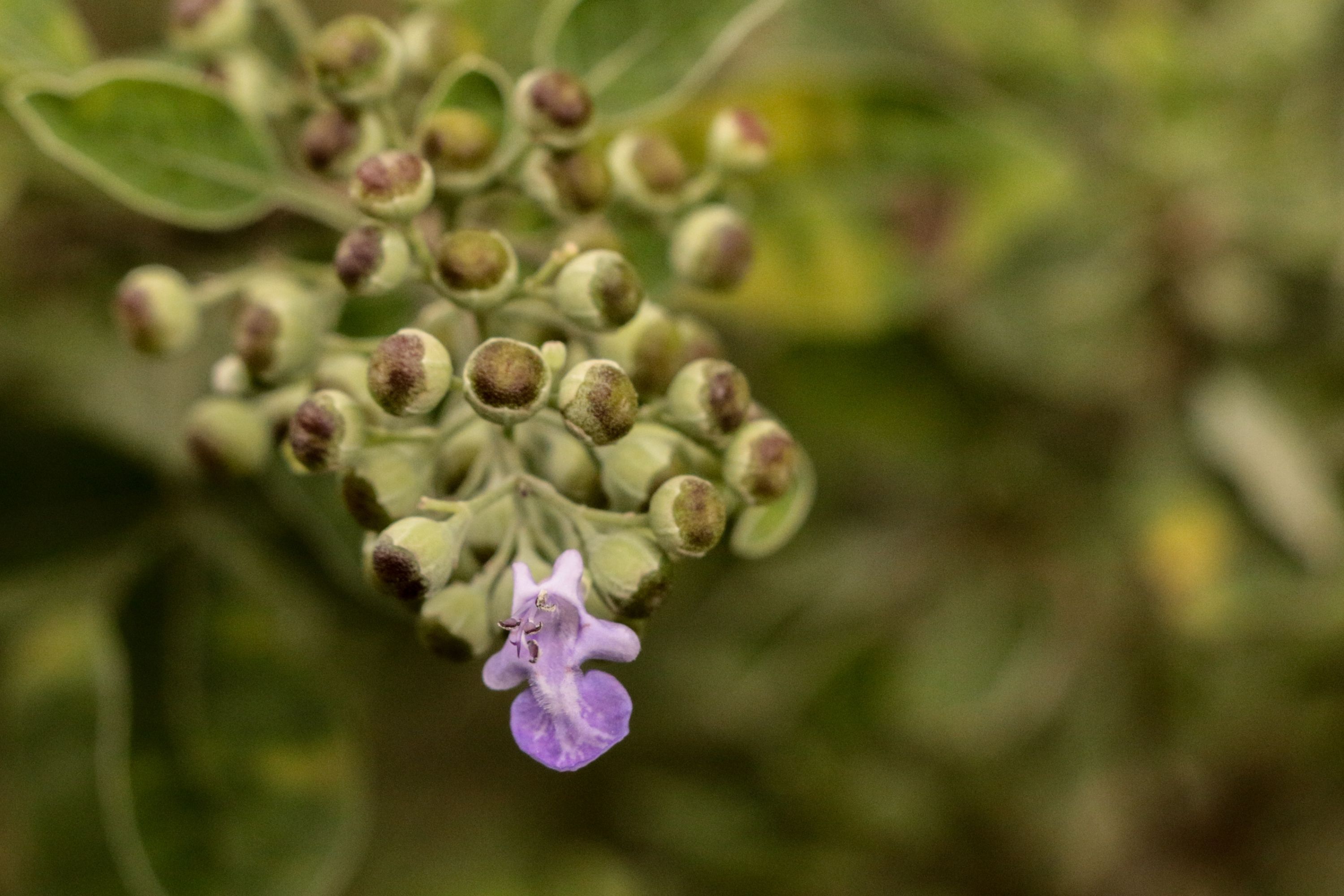Simpleleaf chastetree
(Vitex trifolia)

Description
Vitex trifolia, the simpleleaf chastetree, is a large coastal shrub or small tree. Vitex trifolia is a large coastal shrub or small tree, less than 5 m in height with the stems covered by soft hairs (tomentose). The leaves are oppositely arranged along the stems and are usually compound, composed of 3 linear leaflets which range between 1 –12 cm in length. The upper surface of the leaves are green and the lower surface grayish green. The flowers are born in panicles or clusters up to 18 cm in length. Individual flowers have purple to violet two-lipped corollas that are approximately 5 mm long. The stamen are in two pairs and the ovary is superior, or develops above the corolla. The fleshy fruits are about 6 mm in diameter and contain 4 small black seeds. Vitex trifolia is naturally found along coastlines from tropical East Africa as far east as French Polynesia. The leaves are used to treat female ailments in the Cook Islands, and used to relieve fever in Samoa. Additionally in Samoa, the dried leaves are burned to deter mosquitos. Vitex is a genus of flowering plants in the sage family Lamiaceae. It has about 250 species. Common names include chaste tree or chastetree, traditionally referring to V. agnus-castus but often applied to other species as well. Species of Vitex are native throughout the tropics and subtropics, with a few species in temperate Eurasia and one in New Zealand. About 18 species are known in cultivation. Vitex agnus-castus and Vitex negundo are often grown in temperate climates. About six others are frequently grown in the tropics. Most of the cultivated species serve as ornamentals. Some provide valuable lumber. The flexible limbs of some species are used in basket weaving. Some of the aromatic species are used medicinally or to repel mosquitos. The genus Vitex was named by Linnaeus in Species Plantarum in 1753. Vitex was the name used by Pliny the Elder for Vitex agnus-castus. It is derived from the Latin vieo, meaning to weave or to tie up, a reference to the use of Vitex agnus-castus in basketry. As a result of phylogenetic studies of DNA sequences, Vitex is one of several genera that were transferred from Verbenaceae to Lamiaceae in the 1990s. It is the largest genus in the subfamily Viticoideae of Lamiaceae. Taxon sampling in molecular phylogenetic studies has never been sufficient to test the monophyly of Viticoideae, but it is generally thought to be an unnatural group.
Taxonomic tree:







